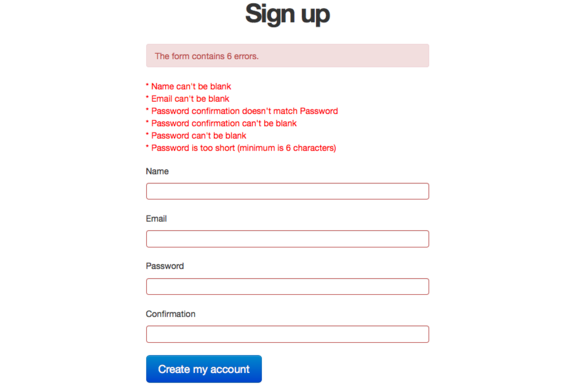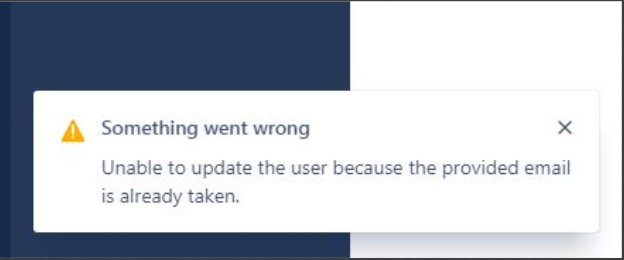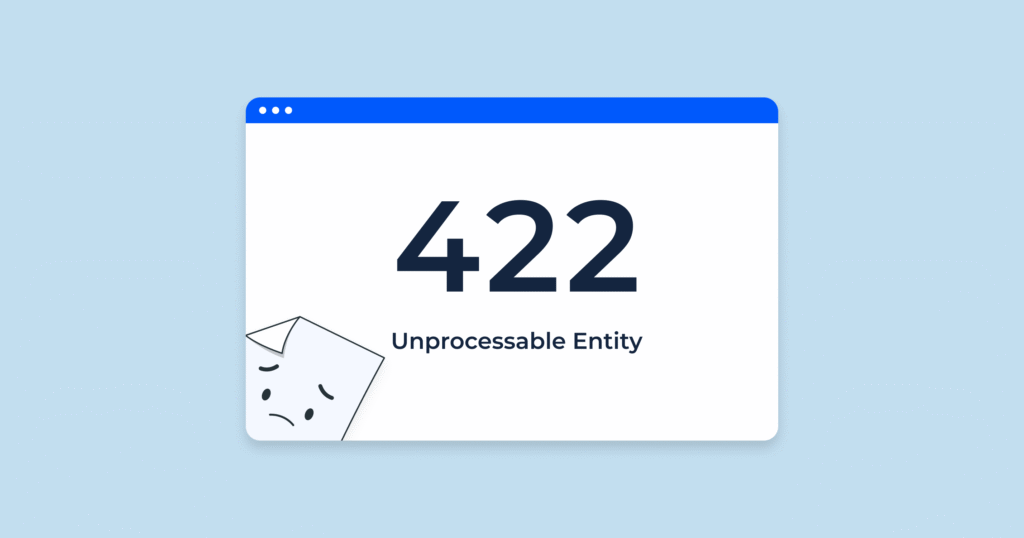Introduction
In the world of web development and APIs, HTTP status codes play a vital role in helping both developers and end-users understand the result of a particular request. One of the more confusing yet increasingly important status codes in modern application development is the 422 status code, also known as “Unprocessable Entity.” If you’ve ever encountered this error while building a RESTful API, working with eCommerce platforms, or sending data to a server, you know that resolving it can be tricky.
Table of Contents
1. What Is the 422 Status Code?
The 422 status code is part of the HTTP/1.1 standard extension defined for Web Distributed Authoring and Versioning (WebDAV). It is officially known as “Unprocessable Entity.” In practical terms, this code indicates that the server understands the request’s content type and syntax, but it cannot process the instructions within the request because of semantic errors.

- HTTP/1.1 and WebDAV
- In Modern REST APIs
Key Characteristics of the 422 Status Code
- Technical Accuracy: Unlike a 400 (Bad Request) error that can sometimes indicate an issue with the request format, 422 pinpoints that the request is syntactically correct but fails specific business or data validation logic.
- Semantic Errors: The server can read the request, but one or more business rules are violated.
- HTTP Compliance: Returning 422 ensures you’re adhering to best practices in HTTP error handling by giving a more precise, standardized response rather than a generic 400 or 500.
2. Why Does the 422 Status Code Occur?
The 422 status code indicates that the server understands the request but cannot process it due to specific semantic issues. Let’s explore some of the most common reasons behind this:

- Missing required fields (e.g., email or username not provided)
- Invalid data types (e.g., providing a string instead of an integer)
- Values out of acceptable range (e.g., negative values where positive integers are expected)
- Failing business logic (e.g., you’re attempting to process an out-of-stock item)
- Password or username constraints not satisfied
- Date format discrepancies
- The server might parse the request incorrectly if the Content-Type header is mismatched or the request body is encoded incorrectly. Even if the syntax is valid, semantic mismatches can lead to a 422.
- If your application calls an external service or API and the request does not meet the partner’s constraints, you might receive a 422 response.
3. Common Situations Where You Might Encounter 422
3.1 Form Submissions

3.2 RESTful API Calls
3.3 Integration with Third-Party Services
3.4 Webhooks
4. How to Fix or Handle a 422 Status Code
4.1 Review Your Request Payload
- Check Required Fields: Ensure you’re including every field that the server expects.
- Data Types: Confirm that the types of your data match what the server requires (e.g., email is a string, age is an integer).
- Constraints: Confirm that you’re not violating length constraints, numeric bounds, or other business rules.
4.2 Validate on the Client Side

4.3 Validate on the Server Side
- Users can disable JavaScript or bypass client-side validations.
- Malicious actors might intentionally send malformed data.
4.4 Check Server Logs and Documentation
- Server Logs: The application logs often contain details about why the request was deemed unprocessable.
- API Documentation: If you’re integrating with a third-party API, double-check the required parameters, data types, and any unique constraints.
4.5 Ensure Proper Error Handling
- Error Codes or Fields: For instance, “error”: {“field”: “email,” “message”: “Email is invalid”}.
- Actionable Explanations: Let the client know how to fix the error, e.g., “The password must be at least eight characters long.”
4.6 Use Testing and Debugging Tools
- Postman or Insomnia: Test your requests and examine the exact payload you’re sending.
- cURL: For quick checks in the terminal, cURL can confirm if you’re sending data in the correct format and headers.
- Browser Dev Tools: Check network requests, see the response body, and confirm the request payload.
5. Best Practices for Preventing 422 Errors
5.1 Comprehensive Validation Layer
- Use Validation Libraries: Libraries such as Joi (for Node.js), Laravel’s built-in validation (for PHP), or Django’s model validators (for Python) ensure consistent validation logic across your application.
- Centralize Rules: Maintain validation rules in a single, central location so that any changes propagate throughout your system.
5.2 Clear API Documentation
- List Required Fields: Provide a thorough list of fields, data types, and constraints.
- Publish Example Requests: Offer sample request bodies that developers can copy/paste to get started.
- Error Codes: Document how your API responds to invalid requests, including the HTTP status code and response format.
5.3 Implement Robust Logging and Monitoring
- Detailed Logs: Capture enough detail in your logs to diagnose issues quickly.
- Monitoring Tools: Use platforms like Datadog, Splunk, or ELK Stack for real-time monitoring and alerts.
- Alerting: If a spike in 422 errors occurs, get notified so you can investigate promptly.
5.4 Thorough Testing
- Unit Tests: Validate each function and module that handles input.
- Integration Tests: Ensure that systems that interact with each other respect each other’s validation rules.
- User Acceptance Testing: Involving real-world use cases can reveal hidden or edge-case issues.
5.5 Communicate and Collaborate
- Team Alignment: Ensure front-end and back-end teams are aligned on field requirements, constraints, and expected error handling.
- Versioning: If you update your validations, use API versioning to prevent breaking changes in older clients.
6. 5 Frequently Asked Questions About the 422 Status Code
Below are five common questions developers and stakeholders often ask about the 422 status code, along with clarifications to help you better understand how it works and how to handle it.

7. Conclusion & Strong Call to Action
The 422 status code, or “Unprocessable Entity,” might not be as commonly recognized as some other HTTP status codes, but its role in web applications and APIs is crucial. By accurately communicating that your request is structurally valid but semantically flawed, the 422 status code guides developers and users alike toward the precise issue that needs fixing. Whether you’re building a new REST API, integrating with third-party services, or simply validating data in your forms, leveraging the 422 status code can result in more robust applications and a superior user experience.

Contact us:
EXCELL INDUSTRIES LLC
6420 Richmond Ave., Ste 470
Houston, TX, USA
Phone: +1 832-850-4292
Email: info@excellofficial.com




